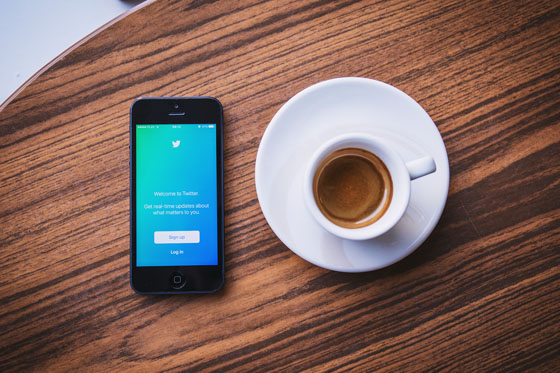#Hashtag101: Key strategies to find, use, and implement the best hashtags for your brand
By now, most of you probably know what a hashtag is, but for those that don’t: a hashtag is a word or group of words that follow the # sign. To a novice, the hashtag may seem confusing or pointless at first glance. However, they do serve a purpose on many of our favorite social media platforms and in fact could be powerful tools to engage your audience and build your brand awareness.
#WhyYouShouldUseThem
Hashtags can expand your reach, amplify your brand, and get your content in front of the people that need to see it. In fact, using hashtags in your social media marketing is one of the easiest ways to expand your influence beyond your current followers.
When you use relevant hashtags, people who are searching for those keywords can find your post and updates and follow you. On Twitter, users are 55% more likely to retweet a post when there is at least one hashtag.
#HowManyIsTooMany
Well, that really depends.
What started out as a simple Twitter experiment has spread onto other networks like Facebook, Google+ and Instagram. LinkedIn did play around with hashtags for a little while, but they ultimately gave up on the practice.

On Twitter, one or two hashtags is best. Once a tweet has more than two hashtags, engagement drops by 17%. Because of the nature of tweets and their low character count, users often suffer from hashtag fatigue – you start to ignore hashtags altogether because they sort of blend into each other.
Users on Instagram aren’t as susceptible to hashtag fatigue as those on other sites like Facebook and Twitter. In fact, often posts with no hashtags at all receive far fewer interactions than those with a few. While Instagram allows a maximum of 30 hashtags per post, tagging your photos with too many of the most popular hashtags may get you new followers, but they’ll generally be low quality – spammers or people only following you so that you follow them back.
Furthermore, using too many hashtags dilutes your message and makes you look desperate. A good rule of thumb is to use four to five hashtags per post. Some brands opt to include hashtags in a separate comment instead of on the post itself so that the original message that they intended was not washed out. When this is done, they can have as many as 11 or 12 hashtags without ruining their message.
While Facebook does allow for the use of hashtags, posts without hashtags fare better than those with one. Facebook started implementing hashtags in mid-2013 and since then the medium has had little positive effect on reach. Because of the low use of hashtags on Facebook, it is probably best to avoid them on this platform.
#MoreHashtagTips
Can’t figure out what hashtags your business should be using? No worries! Here are a few tips to find the right hashtags for you:
1. Follow influencers
Identify who are the key players in your market and what hashtags they use. This will help you narrow in on the hashtags that they’ve found to be most successful.

2. Use tools
Tools like hashtagify.me or hashtags.org help you find and analyze trending hashtags related to specific topics. These tools provide a wealth of information including trend graphs and users that have interacted with a certain hashtag.
3. Stay on Trend
Twitter Tailored Trends gives you a list of topics and hashtags based on your location and the people you follow. While its list of topics is rather limited, it could be useful to keep an eye on the trending topics that interest your followers and not just the Twitterverse as a whole.
4. Know the Hashtag
Do your research! Just because a hashtag is trending, doesn’t mean that it is appropriate for your brand. You could inadvertently associate your brand with a raunchy campaign or a completely inappropriate circumstance. Before using any hashtag, be sure to browse through the hashtag page to ensure the associated content is what you think it would be.
5. Brand hashtags
You can create a brand hashtag for a specific campaign or to showcase your company’s culture, products, or services. It could also be the name of an event that you’re having or of a contest/giveaway you run. These can help drive participation from your followers and will automatically organize all the posts that are tagged with it on a hashtag page. Your brand hashtag should be catchy, easy to remember, and not too long. Choose one hashtag for your campaign and stick with it to avoid diluting your message.

6. Event Hashtags
If your brand is sponsoring or hosting an event, you may find it beneficial to create a hashtag for it. This will create a community around the event and will allow followers to find information and other material on the event through the hashtag’s page. This also helps you spread the word about the event in a quick and easy manner. Sometimes, if you’re hosting a live event it may be prudent for you to notice other hashtags that are being shared. You may have to modify your hashtag in response to that. For example, if we were promoting an event using the hashtag #MGEvent2017, but our followers were using #MGParty2017 with more frequency, we may want to start using the #MGParty2017 hashtag in our own communications as well.
If you already have an active social media presence, adding hashtags will be as easy as pie. You’re posting anyways, so you might as well enhance your posts and improve your performance!
Do you need help with your social media plan and hashtag implementation? Give us a call at 248.687.7888 or email us at inquiry@mediaG.com for more information on how we can help your business stand out on social media!


.png)
